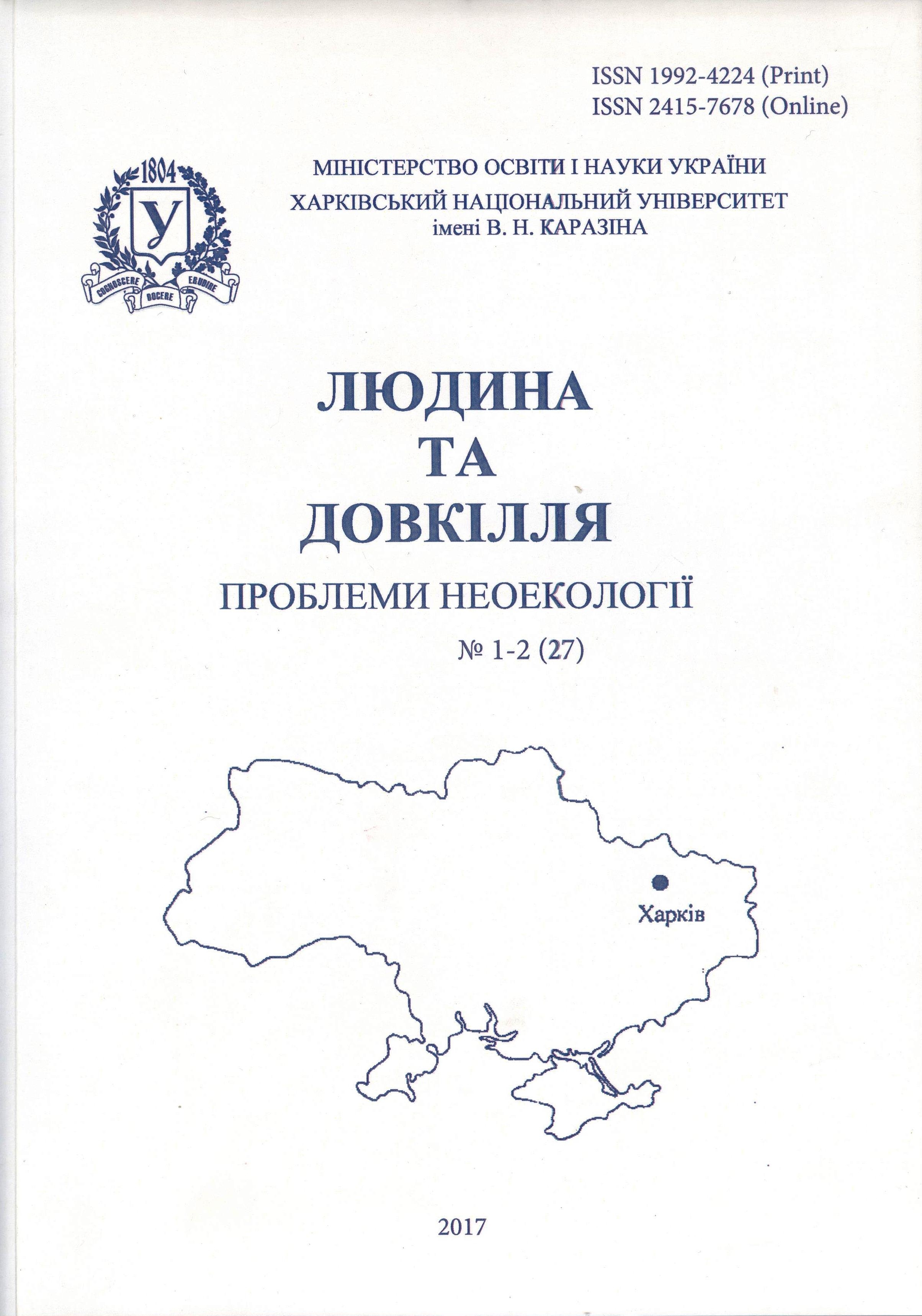Hydrological Studies of the Dniester Estuary in 2012-2017
Abstract
Purpose. The study of the features of long-term changes of the Dniester Estuary hydrological regime main characteristics in 2012-2017 based on the results of annual surveys performed by Odessa National I. I. Mechnikov University. Methods. Measuring of the water transparency, temperature and electrical conductivity in the surface and near-bottom layers were carried out using standard techniques with Secchi disk and portable HACH analyser with temperature and conductivity sensors. Results. Based on the studies performed, almost two times decrease in water transparency values in summer of 2012-2017 has been established compared with the same period of 2003-2011. It was shown that the maximum transparency values were observed in the southern part of the estuary, where the presence of seawater is almost constant. Analysis of electrical conductivity spatial distribution has revealed practically constant influence effect of seawater intrusion in the southern part of the estuary, especially in the bottom layer, and periodical influence effect in the middle and northern parts. Significant increasing of the range of water temperature and electrical conductivity variations in the Dniester Estuary has been recorded in summer 2012-2017 comparison with summer 2003-2011. Conclusions. The established peculiarities of hydrological characteristics’ spatial distribution indicate that river discharge and intrusion of marine water are the most important factors determining the Dniester Estuary hydrological regime. Increase of temperature and conductivity of the Dniester Estuary water in summer 2012-2017 in comparison with 2003-2011 was registered. An anomalous penetration of marine waters into most part of the estuary was detected in July 2016, which in the past was observed for the last time in 2011.
Downloads
References
Klimenko, V.G. (2009) Gidrologiya Ukrainy: Navchalnyj posibnyk dlja studentiv-geografiv [Hydrology of Ukraine: Learning guide for students]. Kharkiv. 124 [in Ukrainian].
Hrebin’, V.V., Khilchevskyi, V.K., Stashuk, V.A., Chunarov, O.V., Yaroshevich, O.Ye. (2014) Vodnyi fond Ukrainy: Shtuchni vodoimy - vodoshovyshha i stavky [Water Fund of Ukraine: Artificial reservoirs - reservoirs and ponds]. Kyiv. 164 [in Ukrainian].
Vishnevskyi, V.I. (2000) Richky i vodoimy Ukrainy. Stan i vykorystannya [Rivers and reservoirs of Ukraine. Condition and use]. Kyiv. 376 [in Ukrainian].
Yatzik, A.V., Khoriv, V.M. (2000) Vodne gospodarstvo v Ukraini [Water management in Ukraine]. Kyiv. 504 [in Ukrainian].
Gazyetov, Ye.I., Konareva, O.P., Soltys, I.Ye. (2017) Typizatsiya lymaniv pivnichno-zahidnogo Prychornomor’ya za rekomendaciyamy Vodnoy ramkovoy dyrektyvy ES [Typification of the Northwest Black Sea estuaries following to recommendations of EU Water Framework Directive]. Visnyk of V. N. Karazin Kharkiv National University Series «Еcоlogy», (16). 45-52. [in Ukrainian].
Medinets, V.I., Kovalova, N.V., Derezyuk, N.V., Snigirov, S.M., Cherkez, E.A., Medinets, S.V., Gazyetov, Ye.I. Biologichni naslidky popovnennya Kuyalnytskogo lymanu morskoyu vodoyu z Odeskoy zatoky [Biologi-cal effects of the Kuyalnitsky estuary replenishment with seawater from the Odessa bay]. Man and Environment. Issues of Neoecology. (27). 35–51. [in Ukrainian].
Medinets, S.V., Morozov, V.N., Boyko, V.M., Kotogura, S.S., Mileva, A.P., Gruzova, I.L. (2015) Otsinka ta skladovi richkovogo stoku spoluk azotu ta fosforu do Dnistrovs'kogo lymanu [Estimation and components of the river flow of nitrogen and phosphorus compounds to the Dniester estuary]. The Scientific Issues Of Ternopil Volodymyr Hnatiuk National Pedagogical University. (64). 439-443. [in Ukrainian].
Prychornomorskyi ekologichnyi byuleten (2007) [Black Sea ecological bulletin]. Odessa. 169 [in Ukrainian].
Bushuyev, C.G., Snigirov, S.M. (2012) Kompleksnye issledovaniya ihtiofauny vodoemov bassejna Nizhnego Dnestra v 2011 g. [Ichthyofauna’s integrated studies of the Lower Dniester basin waterbodies in 2011]. Materials of 7-th international scientific and practical conference “Modern fishery and ecological problems of the Azov-Black Sea region”. Kerch. 45-50 [in Russian].
Rukovodstvo po gidrologicheskim rabotam v moryah i okeanah (1977) [Manual on hydrological operations in seas and oceans]. Leningrad. 725 [in Russian].
User Manual of HQ 40d (Hach) (2013). Loveland. 12.
Medinets, V.I., Kovalova, N.V., Gazyetov, Ye.I., Derezyuk, N.V., Snigirov, S.M., Proschenko, V.V., Mileva, A.P., Vostrikova, I.V., Medinets, S.V., Konareva, O.P., Pitsyk, V.Z., Sorokoumov, A.A., Abakumov, A.N. (2009). Ekologicheskaya otsenka kachestva vod Nizhnego Dnestra i Dnestrovskogo limana v 2006-2008 gg. [Environmental assessment of water quality in the Lower Dniester and the Dniester estuary in 2006-2008]. Materials of all-Ukrainian scientific and practical conference - Ecology of cities and recreation areas. Odessa. 327-331 [in Russian].
Kovalova, N.V., Medinets, V.I., Konareva, O.P., Snigirov, S.M., Medinets, S.V., Soltys, I.Ye. (2010). Gidroekologichniy doslidnitskiy monitoring baseynu Nizhnogo Dnistra [Hydroecological research monitoring of the Lower Dniester basin]. The Scientific Issues Of Ternopil Volodymyr Hnatiuk National Pedagogical University. (44). 113-116 [in Ukrainian].
Konareva, O.P., Medinets, V.I., Kovalova, N.V., Medinets, S.V., Snigirov, S.M., Soltys, I.Ye. (2010). Issledovaniya ONU imeni I. I. Mechnikova deltovoy chasti Dnestra [of Odessa National I.I. Mechnikov University studies of the Dniester delta part]. Materials of round table (training) - Water resources of the Dniester river basin is an approach for sustainable development of the region settlements. Vadul-Lui-Vode. 71-78 [in Russian].
Gazyetov, Ye.I., Medinets, V.I., Snigirov, S.M. (2012). Doslidzhennya gidrologichnih harakteristik Dnistrovskogo limanu u 2009-2011 rr. [Investigation of the hydrological characteristics of the Dniester estuary in 2009-2011]. Materials of all-Ukrainian scientific and practical conference - Estuaries of the north-western Black Sea area: urgent hydroecological problems and the ways to solve them. Odessa. 85-88 [in Ukrainian].
Authors reserve the right of attribution for the submitted manuscript, while transferring to the Journal the right to publish the article under the Creative Commons Attribution License 4.0 International (CC BY 4.0). This license allows free distribution of the published work under the condition of proper attribution of the original authors and the initial publication source (i.e. the Journal)
Authors have the right to enter into separate agreements for additional non-exclusive distribution of the work in the form it was published in the Journal (such as publishing the article on the institutional website or as a part of a monograph), provided the original publication in this Journal is properly referenced
The Journal allows and encourages online publication of the manuscripts (such as on personal web pages), even when such a manuscript is still under editorial consideration, since it allows for a productive scientific discussion and better citation dynamics (see The Effect of Open Access).





